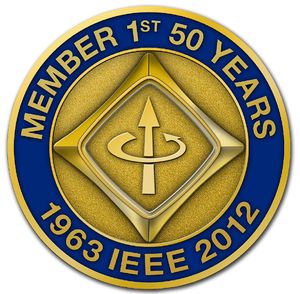First-Hand:Commercialization of Embedded RISC Cores
Commercialization of Embedded RISC Cores
Submitted by Hajime Sasaki, Honorary Adviser, NEC Corporation, President, NEC C&C Foundation
February 8th, 1989, was the most exciting day for me in the over 50 years of my business life at NEC Corporation, where I dedicated myself to semiconductor technology development and semiconductor market expansion. On that day, I made two memorable press announcements. One was about a new contract with MIPS Computer Systems to receive a MIPS RISC microprocessor architecture license. The other was about the establishment of our legal position on the infringement of 8086 microcode copyright for litigation against Intel Corporation.
NEC had developed V-series 16-bit microprocessors, including the V20 and V30. They had CMOS-based enhanced architectures of 8088 and 8086 processors. In December 1984, NEC asked a U.S. district court to confirm that the V-series microprocessors were not infringing on Intel copyrights. After that, for more than five years, I spent a lot of time presenting NEC’s position to the U.S. district court including depositions. Then, on February 8th, 1989, we were able to proudly announce the establishment of our legal position on the litigation.
While I engaged in the litigation, I decided to move beyond 8088/8086-compatible product development and to create new business as a new NEC microprocessor strategy. One of the solutions was to adopt a new RISC microprocessor architecture concept that was developed by MIPS Computer Systems under Professor John Hennessy’s direction. After a few months of negotiations, we reached agreement and made an announcement. The date of the announcement happened to be the same day as the Intel litigation announcement mentioned above.
We believed the MIPS processor architecture would be able to enhance high-performance computer systems and it would then be possible to eventually replace the existing PC platform. A MIPS and NEC team worked closely on the development of a new MIPS CPU with state-of-the-art RISC architecture and NEC’s advanced silicon technology. This resulted in new MIPS CPU developments, such as the R3000, R4000, R4400, and R10000. We also worked closely with Microsoft to develop the new Windows NT operating system and successfully launched the new system on time. It is widely known that the first Windows NT was written in MIPS code and debugged with the MIPS CPU. We also later worked on the development of Windows CE.
The MIPS CPU was also widely adopted for embedded applications such as in console game machines, wireless routers, and raid disk controllers. Some of NEC’s digital TV controllers integrate four MIPS CPUs on a single chip. NEC has sold over 300 million MIPS CPUs during the last 20 years.
In addition to the MIPS CPU developments, I decided to develop proprietary NEC 32-bit RSC microcontrollers called the V850 series. They were for real-time embedded applications. In those days, most microcontrollers were 8- or 16-bit devices. However, I believed that real-time control application would soon require a 32-bit CPU. My first target application was a hard-disk servomotor controller. To achieve high-density data capacity, a hard-disk drive requires very precise servomotor control. Therefore, the controller needs to perform a function like that of a digital-signal processor (DSP) based on read-channel data output. However, its sampling frequency is not as high as that of voice-band DSP applications. I believed that a general-purpose microcontroller would be able to satisfy the requirements at a much lower price than that of a DSP. Consequently, we optimized the timing of the circuit behavior to successfully perform the DSP functions. This resulted in shipments of a few million pieces a month to HDD manufacturers.
The V850 architecture concept was also applied to air-conditioner motor-control applications. To conserve energy and reduce carbon-dioxide emissions as specified in the Kyoto Protocol, air conditioner design engineers were asked to change from legacy AC motors to servo-controlled DC motors. As a result, most high-performance air conditioner motors came to be controlled by V850 series microcontrollers.
The concept was also later employed in the engine controllers for automobiles. It was possible to achieve low emissions and high fuel efficiency using only high-performance 32-bit RISC controllers. We approached automotive manufacturers that were using 16-bit microcontrollers for their engine control. Optimized peripherals such as timers and sensors together with very reliable embedded flash memory were welcomed by the manufacturers. The adoption of embedded flash memory contributed to achieving very low failure rates of less than 1 ppm because testing code was written to all internal flash memory in the testing phase and a kind of self-test was enabled. The code was erased before shipment to customers.
In total, over 1.5 billion pieces of the V850 series were sold and widely used in the embedded-control market. This is one of the world’s largest shipments among the 32-bit single-family embedded controllers.
Thus, my strategy to create new markets with MIPS and V850 RISC architectures was quite successful and significantly increased NEC’s microcontroller business. It created over US$20 billion in new business in total.
My involvement in NEC’s semiconductor business gave me a lot of enjoyment and challenges. I would like to ask current and future Japanese semiconductor managers to keep taking on the challenges of new technologies, new strategies, and new market developments.
